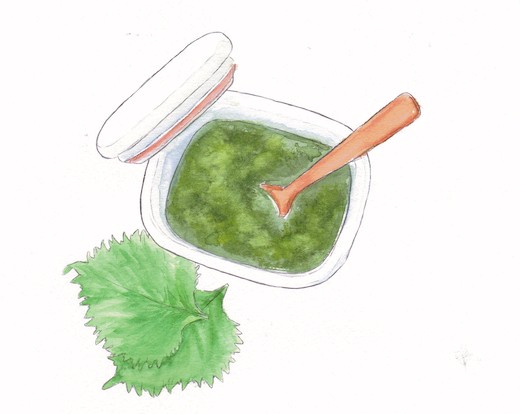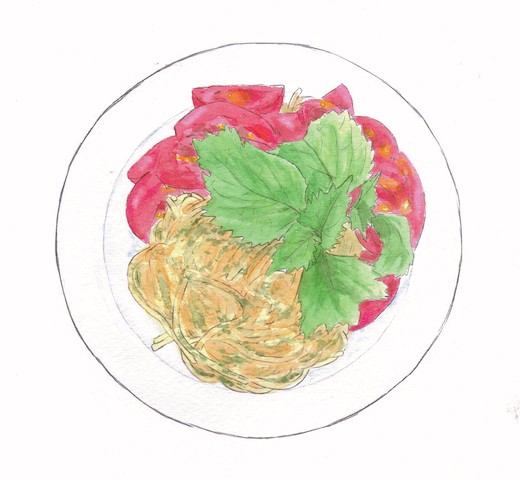
Shiso pesto is the fusion of two food cultures
I went to Italy for the first time two summers ago with my family, and I still bring up the food every chance I get.
“Do you guys remember that Amatriciana we had? Oh my god, it was so good.”
“But that gelato! I’d fly back to Italy just for that.”
“I still dream about that pizza, too — a perfectly salted, toasty crust with a savory red sauce.”
One flavor I couldn’t get quite enough of was fresh basil — on pizza, on pasta, in pasta, with cheese, on bread. Traditional Japanese food doesn’t use basil because it wasn’t introduced to Japan until rather recently, which is maybe why I was able to eat so much of it without getting tired of it.
As I raved about Italian food and the flavors of sweet basil, my sister commented, “You know, it’s funny, because Italy has basil but what do you think the Japanese equivalent would be?”
I considered it for a bit before trying to come up with an answer. What’s a leafy, refreshing, summer Japanese herb? Oh, of course!
The many uses of Japanese shiso
Shiso leaves are frequently used in Japanese food, often used as toppings to Japanese wafū hambagu, teriyaki meatballs, on top of sōmen noodles, or in its simplest form, to accompany sushi and tempura plates. It can also be chopped and tossed into oil-based pastas, or used to dress salads to add a more refreshing flavor. While several varieties exist, dishes that use green shiso leaves are particularly common, for its versatile flavor and low price point.
As I considered the uses of shiso and how it compares to Italian sweet basil, I thought — well, could you make shiso pesto? Turns out, it’s a thing.
Japanese herbs with Italian flavor
Herbs serve as a great way to add not just a few extra vitamins and minerals into our meals, but delicious, complex flavors that have us coming back to them again and again. And as much as I love the traditional uses of shiso, those creative spaces between two cultures is where really interesting flavors and foods emerge — who would’ve thought adopting an Italian recipe with Asian herbs could work so well?
I love shiso pesto for its brightness and sharp smell, and most of all for its ease of use in cooking. With pasta or on salmon, with bread or with cheese, it’s made something familiar taste new to me again.

Recipe for Shiso Pesto
Ingredients
- 80 grams shiso leaves (100 leaves)
- 60 grams pine nuts
- 1 clove garlic
- 120 ml extra virgin olive oil
- 1 tsp salt
- Optional: parmesan cheese to taste
Instructions
- Rinse the shiso, then drain.
- Toast the pine nuts in a pan, just enough so they begin to smell nice.
- In a food processor or blender, add all ingredients and blend until smooth.
- Serve with pasta, bread, cheese, or tomatoes — enjoy!
